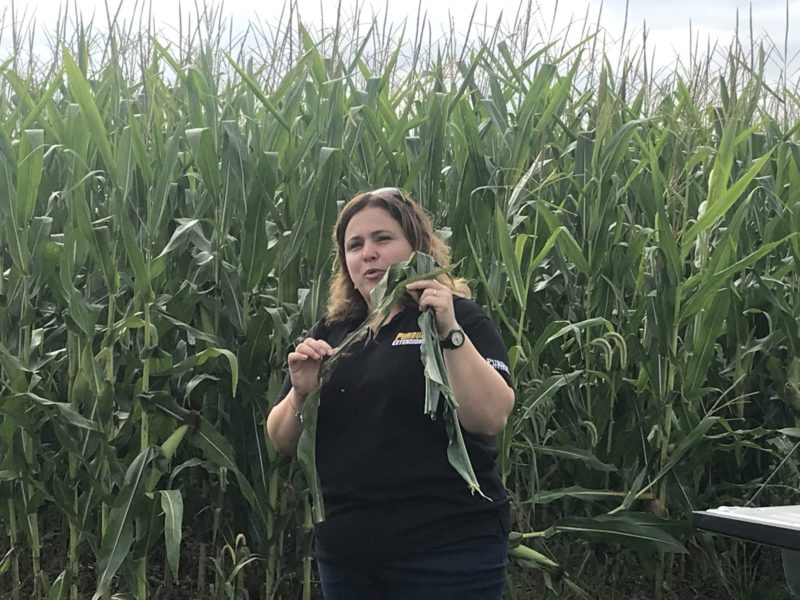Post
Tar spot continues to be a concern in 2019

Purdue Field Crop Pathologist Darcy Telenko says corn tar spot continues to be a concern in Indiana.
“I’ve been in fields where 100 percent of the field is infected and the infection goes all the way top of the crop,” she says. “What we’re finding is we know very little about it. It’s hard to work with – it’s an obligate parasite and requires living corn tissue so it’s going to go after our best-looking corn.”
She says the disease starts in the lower canopy and will work its way up the plant.
“We’re really not going to be able to implement any fungicide choices (at this point), but we are looking to see where corn tar spot is active,” she says. “If we do see it’s active, we know the inoculum is going to be available for future seasons.”
Tar spot reduced yield by 20-50 bushels across the northern part of Indiana in 2018.
She says growers should continue to scout fields for diseases and stalk health issues.
“Check and see what you have—I’m interested so if you see tar spot please look me up and send me a note because we’re trying to track that and see how widespread and how severe it really gets this season,” she says. “Also, as we approach the end of the season, I would keep an eye on ear rots and stalk rots because those are the things we need to be watching out for now.”
Telenko says fields with stalk quality issues may need to be prioritized during harvest.
Audio: Darcy Telenko, Purdue Field Crop Pathologist

Add Comment